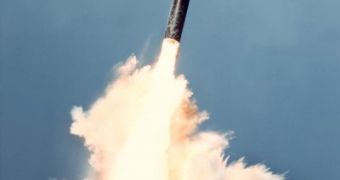The US Government has announced plans to create the first new nuclear warhead since the end of the Cold War. The official reason is that the military wants to replace the old W76 warheads, made since 1978, that are being stored in what is known as the Enduring Nuclear Stockpile or deployed on nuclear submarines.
An Ohio class nuclear submarine can carry up to 32 Trident II D5 multiple warheads nuclear missiles. That is enough to wipe out an entire country. Ballistic missile submarines have been of great strategic importance for the USA and Russia since the start of the Cold War, as they can hide from reconnaissance satellites and fire their nuclear weapons with virtual impunity. This makes them immune to a First Strike directed against nuclear forces, allowing each side to maintain the capability to launch a devastating retaliatory strike, even if all land-based missiles have been destroyed.
After the Cold War, the U.S. did not build any more nuclear weapons and even plans to retire many of these weapons as part of its nuclear arsenal reductions under the Moscow Treaty on Strategic Offensive Reductions. But the Departments of Energy and Defense (DOD) would like to replace some of those old nukes.
So, in March, Lawrence Livermore National Laboratory in California won the initial stage of the competition to design the nation's first new nuclear warhead in almost 20 years. Officials stated that the new weapon would not fulfill a new strategic role ("strategic missiles" are used for intimidation purposes only, while the actual attack ones are called "tactical missiles") in a changed world, but rather replace a portion of the W76 arsenal, due to concern over the aging warheads' ability to retain their full destructive potential in storage.
Other official reasons have also been found, like the old "national security" or the need to create a more environmentally benign weapon.
Of course, there are some voices saying that it's not at all the time, or the political climate to start designing new nuclear weapons. "U.S. leadership will be required to take the world to the next stage--to a solid consensus for reversing reliance on nuclear weapons globally as a vital contribution to preventing their proliferation into potentially dangerous hands, and ultimately ending them as a threat to the world," wrote former government bigwigs George Shultz, William Perry, Henry Kissinger and Sam Nunn in the Wall Street Journal.
Unfortunately, such a debate doesn't take place, or at least in public, so it seems that the U.S. wants to retain the capacity to build and field nuclear weapons well into the future. So how can they talk about general nuclear nonproliferation to some of the most rebellious countries in the nuclear domain, like North Korea, Iran or Pakistan?

 14 DAY TRIAL //
14 DAY TRIAL //